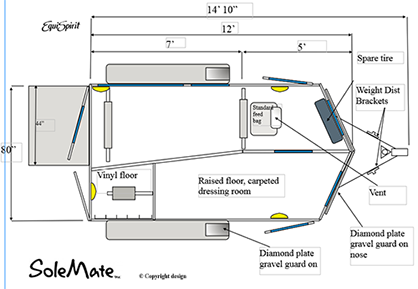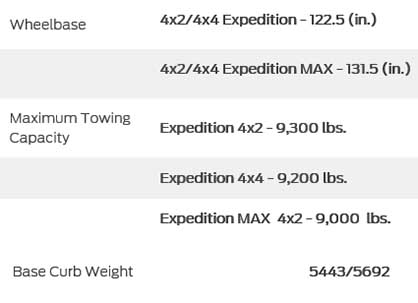Safe Tow Vehicles: Bumper Pulls and Goosenecks
 EquiSpirit Trailer Co.- Tom’s Trailer Talk
EquiSpirit Trailer Co.- Tom’s Trailer Talk
Towing with an inadequate tow vehicle will endanger you, your horses, and others out on the road. Here is what you need to know:
QUICK TIPS
BUMPER PULLS
Use three criteria when choosing a safe tow vehicle: towing capacity, wheelbase length, curb (actual) weight.
- Towing capacity is the amount of weight the manufacturer states that the tow vehicle can pull and still be safe. A horse trailer has a Gross Vehicle Weight Rating – the amount the trailer can hold including itself and still be safe. The GVWR is always more than the actual weight of the loaded trailer. The towing capacity should be 20% more than the weight it’s pulling. If you’re not sure of the weight, have it be 20% more than the GVWR.
- Wheelbase length is the distance from the rear axle to the front axle. The longer the wheelbase the less likely the front end will raise up from tongue weight pushing down behind the rear axle. Shorter wheelbase vehicles should always use a weight distribution system (often mistakenly called sway bars) to stabilize the rig and eliminate the front of the tow vehicle from lifting.
- Curb weight is the amount of weight the tow vehicle weighs empty. The lighter the tow vehicle is in relation to the loaded weight of the trailer, the less control you will have and the rig. A 5,000 pound tow vehicle can safely tow a 6,000 pound trailer. A 4,200 pound tow vehicle can not.
Example of a safe tow vehicle for a standard 2 horse trailer with or without a dressing room:
Bare minimum wheel base length should be 112 inches. The longer the wheelbase the more stable the vehicle. The Expedition has 122.5 inch length Most two horse bumper pulls have a GVWR of 7000 pounds. 205 times 7,000 pounds totals 8,400 pounds. The Expedition can tow 9,000 to 9,300 pounds.
Note: Always check the rating of your frame mounted hitch. A 9,300 pound towing capacity vehicle often has a hitch that has a weight carrying towing capacity of only 5,000 pounds – see our article on hitches by clicking here.
GOOSENECKS
For 3 or more horses, use a gooseneck over a bumper pull.
- A truck can handle more tongue weight when it’s placed in the bed of the truck over the axles (gooseneck) than it can behind the axles. A 150 (1500) 1/2 ton truck can hold up to 3,300 lbs in the bed and up to only 1200 pounds of tongue weight on the frame mounted hitch using a Weight Distribution System.
- Choose a towing capacity that is 20% or more than the trailer’s loaded weight or the GVWR for trailers that have a GVWR up to 12,000 lbs. For trailer with GVWRs from 14,000 to 16,000, 15% of the GVWR is acceptable.
- Some of these towing formulas change for larger/heavier trailers such as a 6 horse or a living quarters trailer. A 7,600 pound F350 dually can tow up to 33,000 lbs.
Reduce Your Weight
DO YOU REALLY NEED TO HAUL TWO HORSES?
The EquiSpirit SoleMate “2 Minus 1” Trailer utilizes the extra stall for tack & personal space/dressing area. At only 14-1/2 feet, with large open horse stall, separate rear tack, personal space/dressing area, and being one horse lighter by default, you broaden your selection of safe tow vehicles. EquiSpirit SoleMate “2-1” HorseTrailer (Available in both Gooseneck and Bumper Pull) Click here for more information on our exclusive 2 Minus 1 trailer design.
For the last 30 years, EquiSpirit has been providing the safest trailers on the market for transporting your horses. Contact our Sale Manager, Tim at 1-877-575-1771 for more information or click here to learn more.











